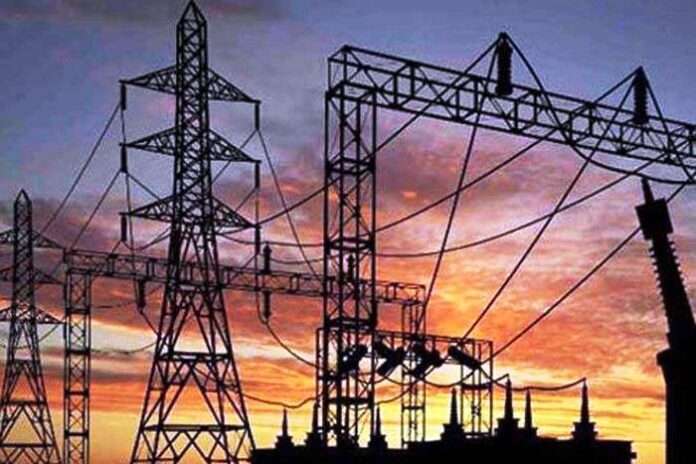A key aim of the amendment Bill is to de-license power distribution and increase competition
New Delhi, August 07, 2021: India’s power sector is one of the most diversified in the world, and the rapidly rising demand for electricity in the country is expected to increase further in the years to come. The sector is undergoing a significant change that is redefining the industry outlook. The Union government’s focus on providing “power for all” has accelerated efforts to ramp up the power generation capacity in the country, largely through renewable energy (RE), which currently has an installed capacity of approximately 95 GW and is targeted to reach 175 GW by 2022 and 450 GW by 2030. The focus on RE is one of the reasons India is regarded as the only G20 nation that’s on track to achieve its NDCs under the Paris Agreement.
The distribution sector has long been a weak link in India’s energy chain, with AT&C losses hovering around 20%. The government has tried several times to make discoms financially viable through schemes like UDAY, but their efforts have not met with the desired success. Another area of concern is the regulatory system that is governing the sector. The Regulatory Commissions in many states have not been able to function with the desired speed or efficiency.
Against this backdrop, the Electricity (Amendment) Bill, 2020, is a welcome step, as it aims to transform the power sector in some very important ways. The Confederation of Indian Industry (CII) and the power-sector giants are happy to note that the Bill will be tabled soon in the Parliament.
This Bill is an amendment to the earlier 2003 version of the Act, which consolidated the laws relating to the generation, transmission, distribution, trading, and use of electricity; undertook measures that were conducive to the development of the power industry; promoted competition; protected the interest of consumers; and sought to supply electricity to all areas of the country.
One of the main aims of the 2020 version of the amendment Bill is to de-license power distribution and increase competition, thereby unleashing next-generation power sector reforms in India. This is a pathbreaking decision that has the potential not only to empower customers but also to bring huge investments into the sector and accelerate technology adoption. The reforms will especially make the RE generation, transmission and distribution financially more attractive to investors.
Although the power sector has taken great strides in generation and transmission, there is a need for distribution reforms to make discoms financially viable. To end the monopoly of state-run distribution companies, the Union finance minister, in her Budget speech, spoke about opening up of the distribution sector. When this happens, it will have a positive bearing on distribution efficiency and reduce tariffs. Furthermore, technological upgrades including smart metering and infrastructure advancements will reduce the huge AT&C losses the industry is currently suffering from.
These measures will ultimately benefit consumers by improving systemic efficiencies and enabling competitive tariffs. The reforms will also give more options to the consumers in choosing their discoms. Meanwhile, the introduction of Direct Benefit Transfer (DBT) of power subsidies will ensure greater transparency and accountability and ensure that the subsidy reaches people who are entitled to it, as we have seen in the case of LPG. The Bill may also prescribe rights and duties of power consumers, as the government plans to ensure round-the-clock supply.
The reduction in power costs through higher indigenisation—particularly for industrial and manufacturing customers—that the reforms are expected to yield will give a boost to the government’s Aatmanirbhar Bharat campaign.
Strengthening India’s manufacturing sector has been one of the top priorities for the Government. We have seen the launch of initiatives like Make in India, Champion Sectors, and the recent Production Linked Incentive Schemes (PLIs) for 13 sectors, supported by regulatory reforms, labour reforms, and reforms related to the ease of doing business and the development of world-class industrial infrastructure. A vibrant manufacturing sector is crucial for realising the vision of a self-reliant India.
However, high energy-costs impact manufacturing competitiveness, especially in large, energy-intensive sectors like steel, cement, aluminium, chemicals, plastics, paper, and fertilisers. Many of these sectors provide raw material to other sectors, thereby transmitting the cost disadvantage further.
High energy-costs also impact MSMEs, which are an integral part of the manufacturing value chain. India has an estimated 200 energy intensive MSME clusters, whose competitiveness is crucial for ensuring cost-effectiveness across the value chain according to the reports published in financialexpress.com.
The other major changes that the Bill is expected to bring about include the appointment of a member with legal background in every electricity regulatory commission, and the strengthening of the Appellate Tribunal for Electricity. This will ensure faster resolution of long-pending issues and reduce the legal hassles for all stakeholders.
There will also be a penalty for not meeting renewable energy (RE) purchase obligations that require power distribution companies to buy a fixed amount of RE and reduce their reliance on fossil fuels. This is necessary in view of the importance of green energy adoption in mitigating climate change and helping India meet its RE and global climate commitments.
The power industry welcomes the progressive policies proposed in the Bill and look forward to their effective implementation once it is passed.
Sinha is co-chairman, CII National Committee on Power, and CEO & MD TATA Power, and Mishra is co-chairman, CII National Committee on Power, and managing director, CLP India





















